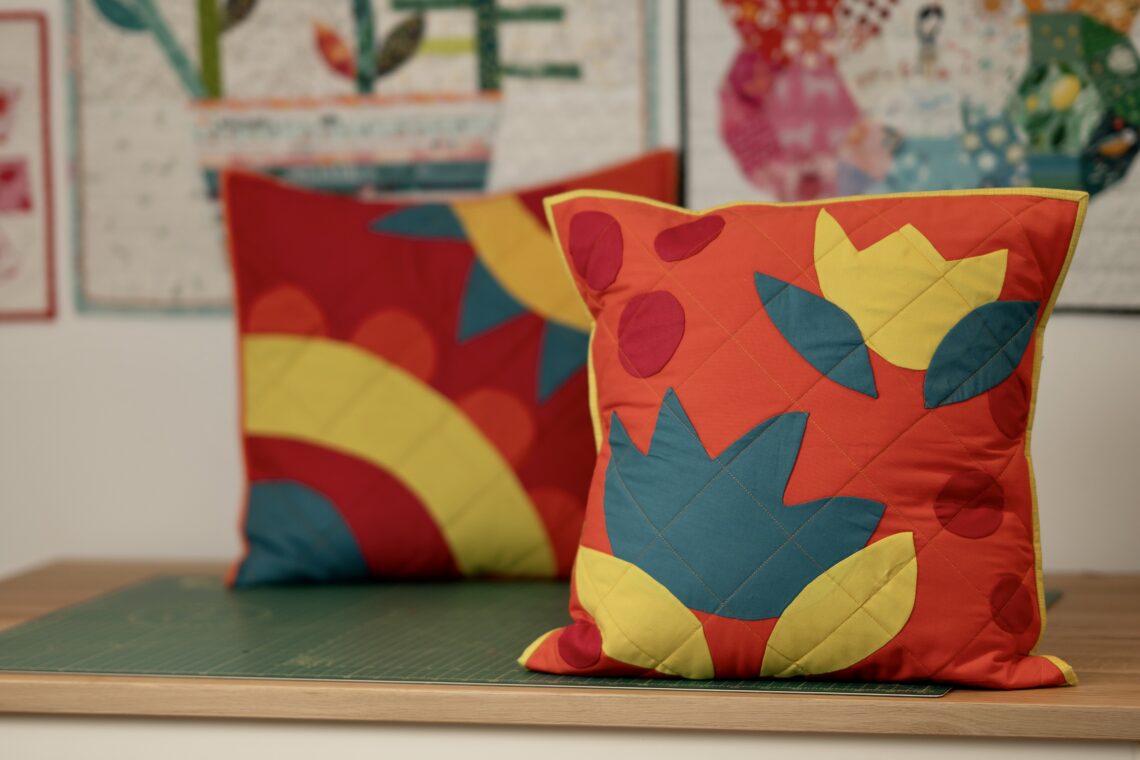
Appliqué Boho Shapes with Confetti Cottons
This week I wanted to share with you a fun appliqué project which you can do in an organic and improvised way, without worrying too much about precision stitching! I love a crisp perfect seam and matching quilt points, but working on these boho shapes allowed me to be a more laid back in my stitching, find ways to improvise, and follow my instinct with shapes and colour.
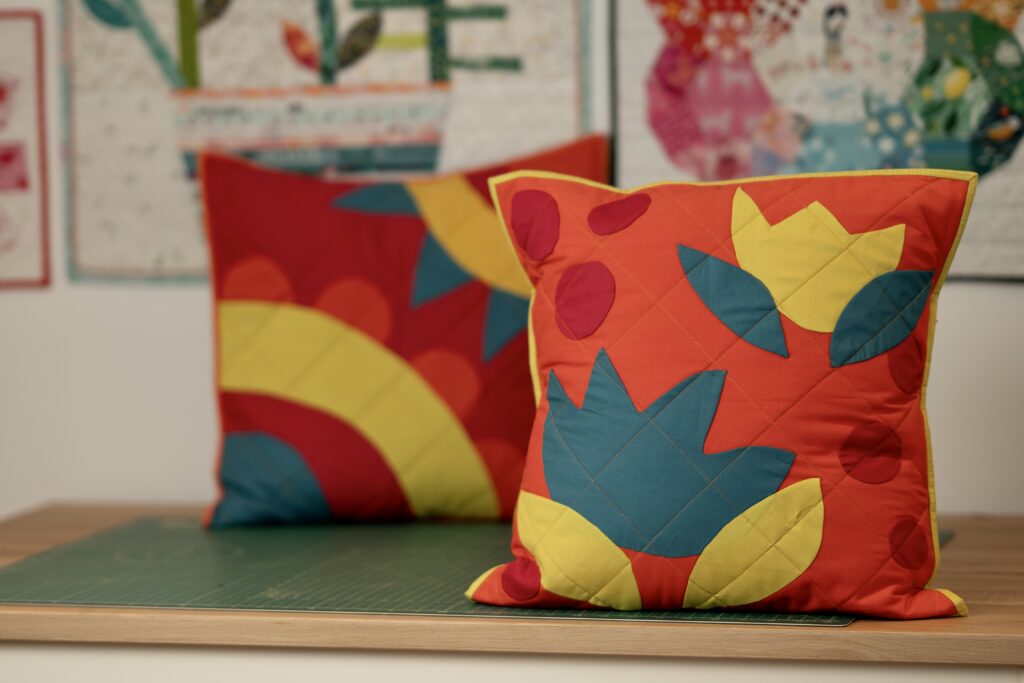
A fun and free appliqué technique
You may have seen Sara Brown’s recent post on the spray starch method of appliqué. That is a great approach for getting really neat edges and symmetrical shapes. For this week’s project, I wanted to focus on needleturn, which is a different appliqué technique.
With needleturn, you will cut a shape of fabric that is slightly bigger than your final piece. You then finger press the seam allowance (a generous 1/8 of an inch) to turn the edge under before stitching it to the background fabric. In this instance, I wanted to play with boho shapes, and found lots of inspiration online! I went on to doodle some shapes I wanted to use, and then traced them directly onto the fabric with a friction pen.
Choosing thread for appliqué
When it comes to appliqué thread, the thinner it is, the less you can see your stitches around your shapes. For this project, I used some Aurifil cotton 80wt which just melts into the fabric and becomes virtually invisible. Where I didn’t have a good shade to match the fabric (such as the pink one), I just used regular 50wt cotton Aurifil that I normally use for machine piecing.
I decided these bright Confetti Cottons needed something bright and visible for the quilting stage, so I picked Glide 40wt thread, which has great eye-catching sheen.
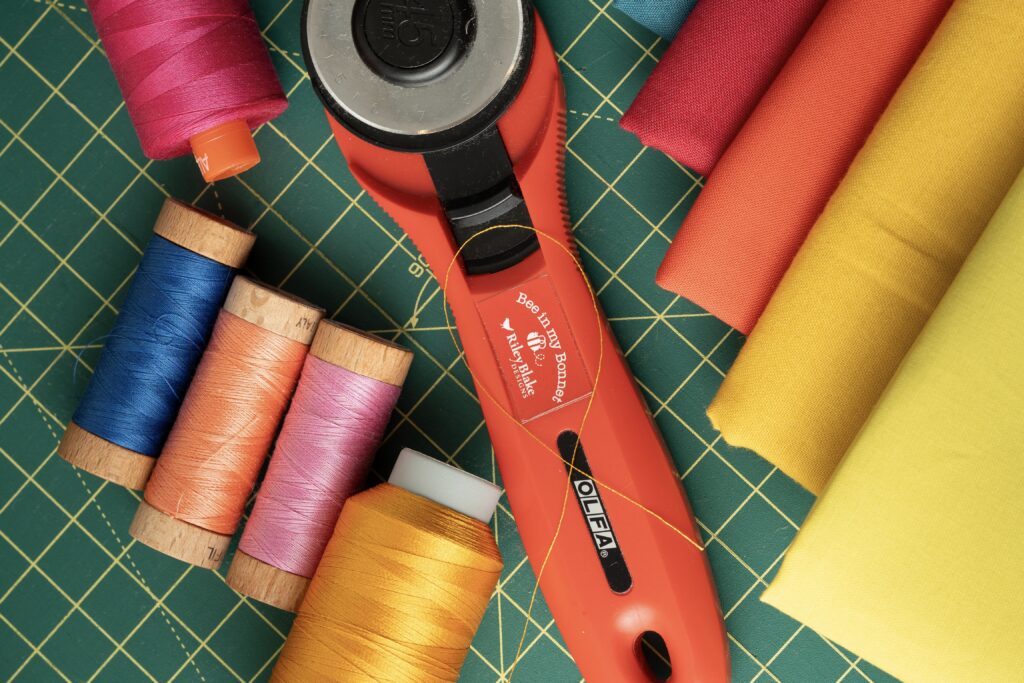
Having fun with colour!
I was keen to work with Confetti Cottons because there is such a broad palette of beautiful solids to choose from. There are lots of technical ways of approaching colour theory, and creating colour combinations. I prefer using online palette colour generators, such as Coolors, for generating ideas. This tool can help you find colour combinations that your are drawn to, and try more unusual palettes. It can be a bit of an addictive process!
In this case, I ended up working with this particular colour palette. What does it make you think of? It reminds me of a tropical holiday.

The Confetti Cottons are:
- Oceanside
- Sunset
- Cranberry
- Citron
- Mustard
I was able to match the palette to fabric using the Confetti Cottons colour card. You can also match the fabric online with the digital swatches, although this can be a bit trickier as it depends on your screen colour settings.
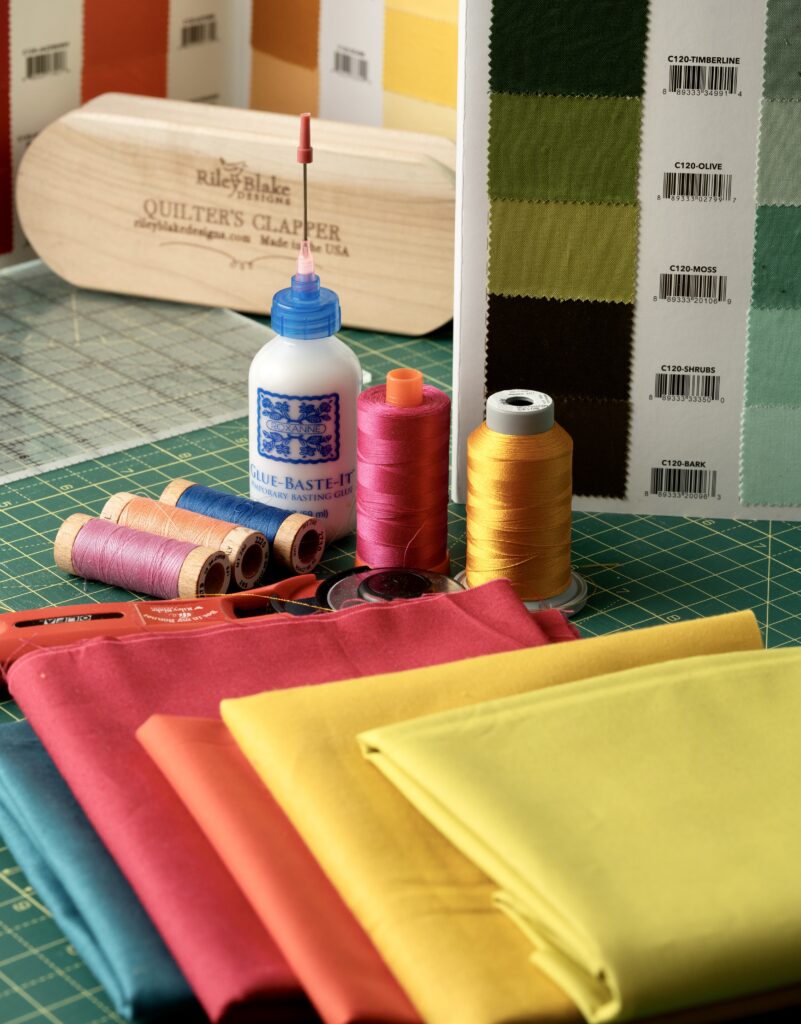
Turning appliqué panels into cushions (and other project ideas)
I had originally planned to make mini quilts for the wall, but I finished these appliqué panel by making two cushions instead. They are constructed using a simple envelope method, which you can learn on this Riley Blake youtube tutorial if you have never tried it before. I used Texture Basics to add a bit of interest to the binding.
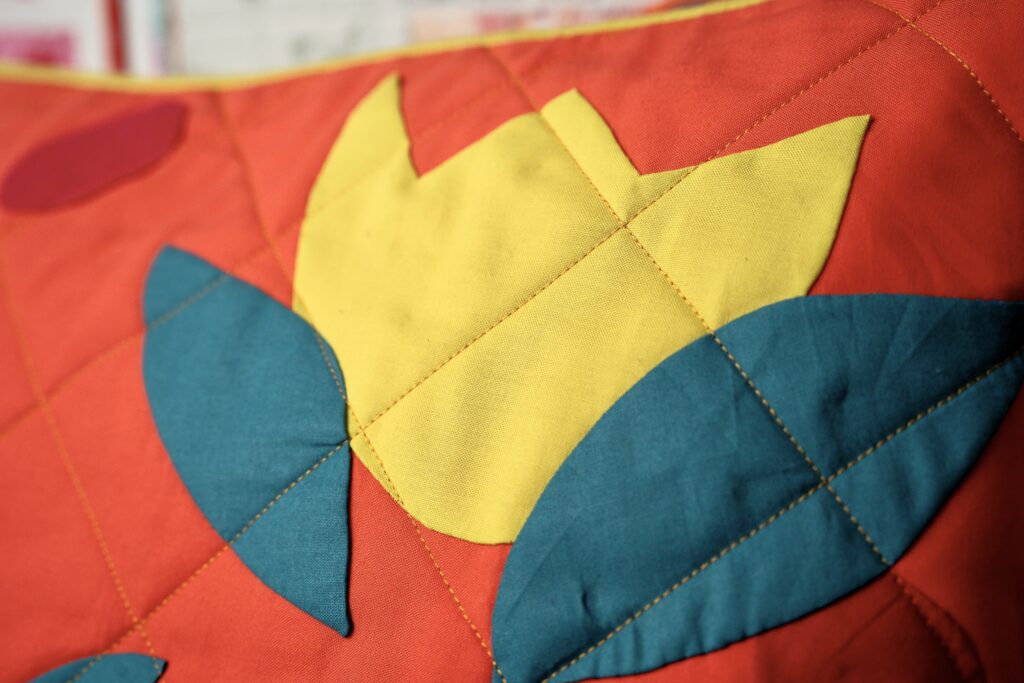
These panels could also make lovely tote bag panels, mini quilts or even appliqué motifs for a the back of a denim shirt.
I hope this project inspires you to play with colour palettes and find new shades and combinations of Confetti Cottons that you haven’t tried before! I’d love to see your ideas – you can comment below or tag me on instagram @rosehillquilts



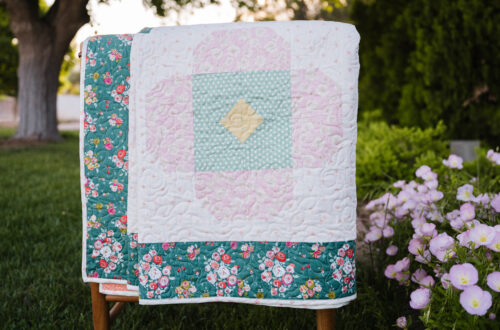
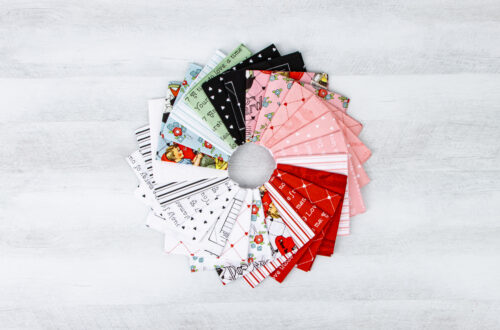
2 Comments
Rita Herzberger
I would love to make these pillows but can’t find thevpattern.
Sara Fernandez
Hi Rita – that’s great that you want to make these pillows! The whole idea of of this design is that it’s organic improvised applique, so you can just doodle any shapes you would like, and then every shape is cut out freehand with scissors.
If you want more inspiration before you make your own shapes, I suggest that you look up Jo Avery’s organic applique.
Finally, the Riley Blake youtube tutorial for an envelope cushion should give you all you need to construct the pillow: https://www.rileyblakedesigns.com/envelope-pillow-demonstration